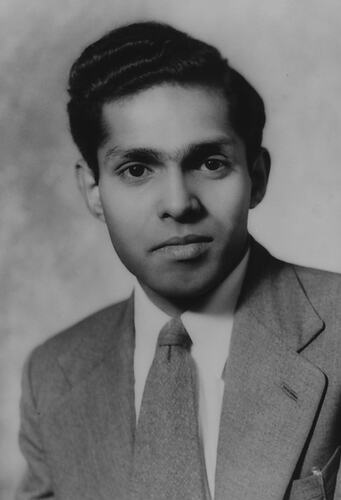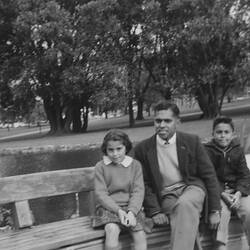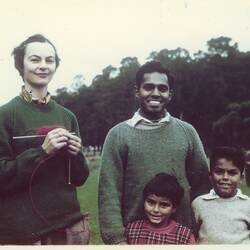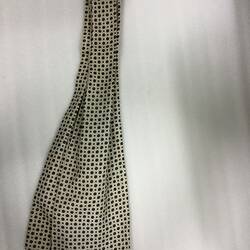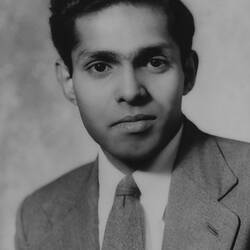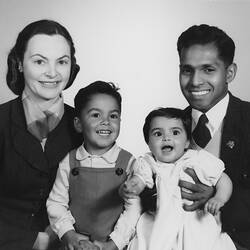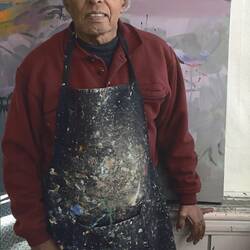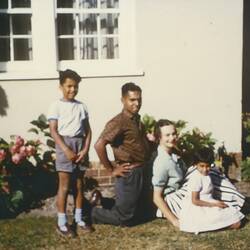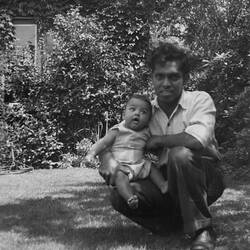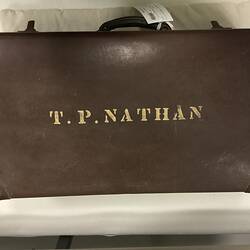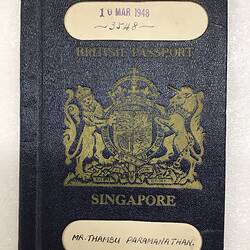Summary
Nathan Paramanathan came to Australia from then Malaya in 1949, but settling down was challenging in the early years.
Early Years:
Nathan was born in 1929 in Port Swettenham (now Port Klang), Malaysia. His parents were Tamil of Sri Lankan heritage, his father a bureaucrat in the railways who was brought to then Malaya by the British due to his English language skills. Thus the family were situated high within stratified Malay society. Nathan and his siblings were all well educated in Singapore where they had relocated.
War:
When the Japanese invaded the region during World War II the family moved back to Malaya and lived in dificult and traumatic conditions under Japanese occupation. At this time Nathan learned compulsory Japanese language.
Coming to Australia:
After 1945, Nathan resumed his formal education with his family wishing for him a medical career. Not able to achieve the marks for Singapore medical college, his parents managed to fund his travel to Perth in 1949. Nathan reflects on these years as difficult. The White Australia Policy was still in force, Australia had a growing fear of future invasion from Asia, and Minister for Immigration Arthur Calwell was still prioritising British, then European migration. Malay, Japanese and Chinese war refugees were deported at this time.
Nathan found Perth isolating so he moved to Melbourne, but his hoped-for medical career was unattainable and, requesting his parents cease financial support, he struck out on his own.
Education & Working Life:
Nathan continued to experience prejudice, but also instances of community support. He finally ended up at RMIT and an arts course where he met his first wife, an Anglo-Australian Catholic woman. They lived in Reservoir and Kew and had two children. Nathan became an Australian citizen in 1954.
Through the fifties and sixties Nathan studied and completed a teaching certificate and finally a BA from Melbourne University. He qualified for student bursaries and worked numerous part time jobs to support the family. He began his teaching career in primary schools, where he became head of the Art Department, then undertook teacher education at Coburg Teachers' College. He later divorced and then remairried during the 1980s.
Nathan was able fulfil his passion for art; teaching, exhibiting and suppporting the early development of art therapy in Melbourne. He continued painting in his home studio into his nineties.
Nathan passed away on 11 September 2023.
The Collection:
This collection of items relating to Nathan Paramanathan provides an opportunity to explore themes relating to colonial influences in Asia, the White Australia policy and the material culture of migrants to Australia.
The suitcase (HT 52509, which has the name T P NATHAN stencilled on the lid), is one of two suitcases Nathan brought to Australia which illustrate the modest number of belongings with which he arrived. The cravat (HT 52510) symbolises the colonial influence on upper strata men in British colonies such as Malaya and the westernisation of their clothing and education. The passport (HT 52511, British subject) represents the decades old dilemma for the Australian Government trying to reconcile the racist contradiction of the White Australia policy with non-white British subjects desirous of migrating.
More Information
-
Keywords
-
Authors
-
Article types
